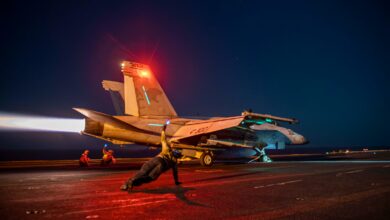The majority of the population – more than 12,000 people – have been displaced by violence in Bakouma in southeastern Central African Republic, the United Nations said on Monday, January 7.
Bakouma, around 110 km (68 miles) from Bangassou, was attacked on December 31 by members of the Popular Front for the Renaissance of the Central African Republic (FPRC), an ex-Seleka militia.
A joint evaluation mission by the U.N. International Organization for Migration and Minusca, the U.N. mission in CAR, to prepare a humanitarian response found that more than 12,000 people, including wounded and sick people and pregnant women, are without shelter on roads and in forests near Bakouma, IOM CAR tweeted on Sunday.
Mission d'évaluation #OIM/#MINUSCA pour engager des discussions et préparer la réponse humanitaire suite aux événements du 31/12 à #Bakouma. >12000 déplacés sur les axes et dans les forêts sans eau potable ni abris, avec blessés, malades, femmes enceintes et enfants. #CARCrisis pic.twitter.com/VaGAZkg4xA
— OIM République Centrafricaine (@IOM_CAR) January 6, 2019
Minusca spokesperson Vladimir Monteiro told The Defense Post that the joint mission entered Bakouma, and Minusca is currently working with humanitarian agencies to locate the displaced people who have fled.
“The majority of the population of this city has fled following the unacceptable and unjustified attack by ex-Seleka FPRC’s militia,” Monteiro said, adding that 90 percent of houses in Bakouma have been looted.
“Only vulnerable people remain in Bakouma which is a source of concern as they can be taken hostages by the armed group,” he said. “Minusca’s priority is to ensure the security of the IDPs.”
What happened in Bakouma?
 Information about what happened in the town is unclear, in part because the telephone lines to the town have reportedly been cut, and because of its relative remoteness.
Information about what happened in the town is unclear, in part because the telephone lines to the town have reportedly been cut, and because of its relative remoteness.
The town has reportedly been under the control of anti-balaka militias for at least two years.
The anti-balaka is a group of nominally Christian vigilante units set up in 2013 to counter the Seleka coalition of Muslim-majority rebel groups following their ousting of President Francois Bozize. Seleka was officially disbanded within months, but many fighters refused to disarm, becoming known as ex-Seleka.
Since then, violence between rival groups along both religious and ethnic lines has left thousands dead, and CAR is de facto partitioned – anti-balaka in the southwest and ex-Seleka in the northeast.
After days of rumors that ex-Seleka fighters were massing in Nzacko in preparation for an attack on Bakouma, violence began on the night of December 30-31, when members of ex-Seleka militas entered the town, Radio Ndeke Luka and RJDH reported, although there were reports of earlier clashes between ex-Seleka and anti-balaka outside the town.
According to reports, members of the Popular Front for the Renaissance of the Central African Republic (FPRC) and Union for Peace in the Central African Republic (UPC) were both involved.
Four people were killed and two seriously injured, according to later reports that also said the telephone network had been cut.
A joint Minusca-Central African Republic Armed Forces (FACa) patrol was sent to restore order and protect the population, Minusca tweeted on January 2.
Monteiro told The Defense Post that the joint patrol arrived in Bakouma after the attack but only Minusca entered the town.
“We told the FPRC’s militia to leave the city and to refrain from these crimes as they contradict the armed group’s participation in the political dialogue under the African Union initiative for peace and reconciliation in the CAR,” he said.
On January 4, Radio Ndeke Luka reported that the FPRC told the local authorities that they had to leave the town. Discussions between the local authorities, Minusca and the FPRC were carried out outside the town.
The order to leave reportedly came from Abdoulaye Hissène and apparently blamed government failure to respect agreements previous agreements.
Hissène is chairman of the FPRC’s National Defense and Security Council (FPRC-CNDS), but has of late diverged from FPRC leader Noureddine Adam.
Both Hissène and Adam are currently under U.N. sanctions.
On January 5, Radio Ndeke Luka reported that people from the town had prevented the local authorities and Minusca from leaving the area, demanding that the government resolve the crisis, and the joint mission remained about 5 km from Bakouma.
The same day, AFP reported that multiple sources said that the FPRC and the UPC were still present in Bakouma, and that an FPRC member had told them that FACa forces had been “cleared” from Bakouma.
Bakouma mine
Despite reserves of diamonds, gold, uranium, copper and iron, Central African Republic is one of the world’s poorest countries.
Nearly 700,000 people are displaced, 570,000 have fled the country and 2.5 million are in need of humanitarian aid, according to the U.N.
President Faustin-Archange Touadera’s weak government controls around a fifth of the country and relies heavily on Minusca for support. The rest is controlled by at least 14 different militia groups who often fight each other for control of revenue from extortion, roadblocks or mineral resources.
Bakouma is known for its uranium ore deposit. In 2006, Canadian company UraMin secured the mineral exploitation rights, but the company was bought by the French state-controlled nuclear group Areva in July 2007 for $2.5 billion. Areva later wrote off the purchase after reserves at UraMin’s mines were found to be much lower than first thought. An investigation was launched amid allegations that UraMin had been purchased to court African politicians and secure nuclear power contracts. Areva withdrew from the Central African Republic in 2012.
There are rumors that the government intends to grant mining rights to Russian companies.
Wikileaks in February 2016 released a trove of documents related to mineral rights and mining in CAR, claiming corrupt practices by western and Chinese companies. Wikileaks accused Areva of not looking after local employees, particularly in protecting miners from radiation.












